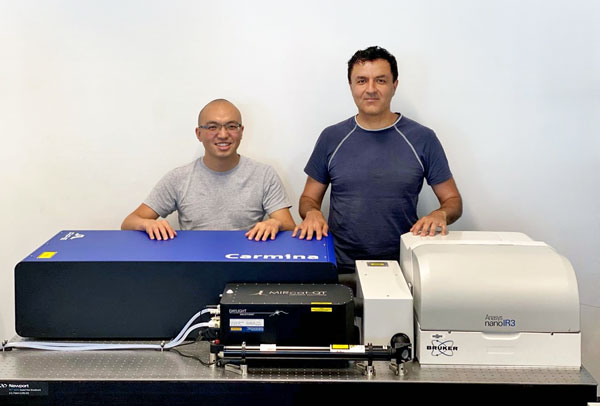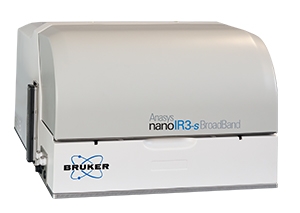Advanced 2D Materials Research with Nanoscale FTIR and s-SNOM
A scientific paper has been published highlighting new implications for engineered nanophotonics, using combined nanoscale FTIR and s-SNOM chemical imaging. The paper is by the Centre for Advanced Solid and Liquid based Electronics and Optics at The University of New South Wales.
Blue Scientific is the official distributor for Bruker Anasys instruments in Norway, Sweden, Denmark, Finland and Iceland. For more information or quotes, please get in touch.
Bruker Anasys instruments
Contact us on +44 (0)1223 422 269 or info@blue-scientific.com
Follow @blue_scientificNew Implications for Engineered Nanophotonics
A scientific paper has been published highlighting new implications for engineered nanophotonics, using combined nanoscale FTIR and s-SNOM chemical imaging. The paper is by The University of New South Wales (UNSW) Centre for Advanced Solid and Liquid based Electronics and Optics (CASLEO).
The new research provides insights into phonon-polaritons (PhPs) in thin layered crystals of hexagonal boron nitride (hBN) on SiO2/Si wafers.
The study used the Bruker Anasys nanoIR3-s Broadband, an advanced nanoscale FTIR spectroscopy and s-SNOM imaging system.
About CASLEO
The Centre for Advanced Solid and Liquid based Electronics and Optics aims to create new materials and systems that impact the well-being of people for the better. Past developments have been a significantly influence in the areas of liquid metals, sensors, electronic materials, optics, microfluidics, and medical devices.
Professor Kourosh Kalantar-Zadeh led the group to the invention of the first ingestible chemical sensor successfully tested in humans. The group’s achievemenents also include the concept of liquid metals as reaction media, and the first report on chemical vapour deposition of 2D metal chalcogenides.

Resolving Features for the First Time
Professor Kourosh Kalantar-Zadeh’s multidisciplinary group combined scattering-SNOM single-wavelength imaging and broadband scattering IR nanospectroscopy to resolve features in near-field amplitude spectra that have never been observed before.
Their research systematically studied the near-field auxiliary signatures on the hBN layers between supported and suspended boundary conditions. This detailed information about the influence of local boundaries has significant implications for engineering and the creation of nanophotonic heterostructures for advanced sensing applications.
Read the Scientific Paper
The research is published in a paper on ACS Nano (DOI: 10.1021/acsnano.9b08895):
Scientific paper on ACS NanoBruker Anasys nanoIR3-s Broadband
The nanoIR3-s Broadband uniquely provides nanoscale imaging and spectroscopy over the entire mid-infrared spectral range (2.5 to 15 μm / 4000 to 670 cm-1). This is achieved by coupling with a broadband light source based on a femtosecond OPO/DFG laser.
As well as high laser power and wide spectral range, the laser source can also switch its line-width for imaging and spectroscopy.

- Highest performance spectroscopy and imaging
- Ideal for 2D materials and graphene
- Nanoscale material property mapping
- Environmental control options
Application Notes
- 2D Materials Characterisation using Nanoscale FTIR Spectroscopy and Near-Field Imaging
- Spatiospectral Nanoimaging of Surface Phonon Plasmons
More Information
Blue Scientific is the official distributor of Bruker Anasys systems in the Nordic region. We’re available to answer all your questions – just get in touch:


